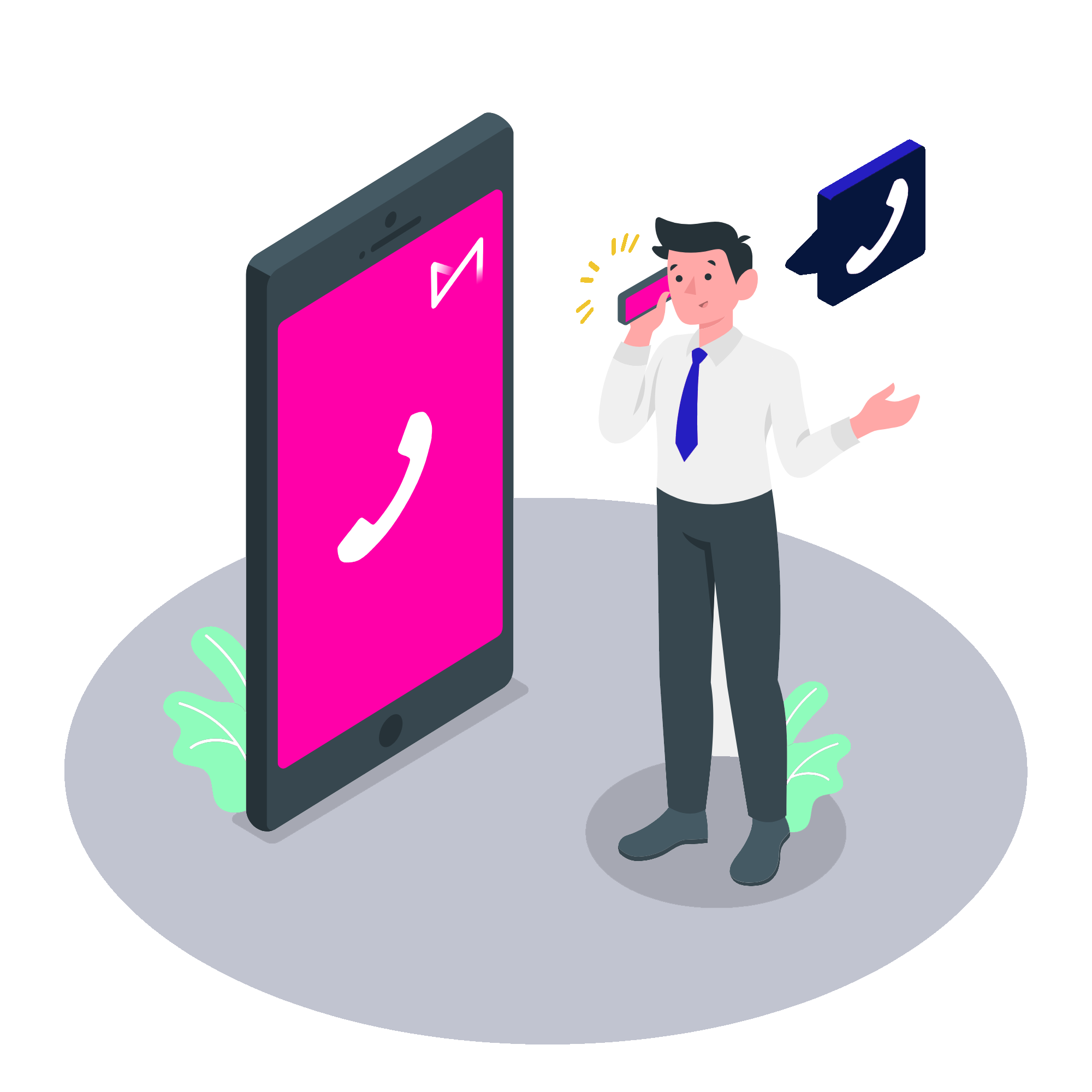What’s the difference between IVR & IVA?
At the forefront of customer interactions, IVR and IVA represent two distinct technologies shaping the contact center landscape. IVR, or Interactive Voice Response, is a telephony technology that enables customers to interact with a company using touch-tone keypad inputs or voice commands. In contrast, IVA, or Intelligent Virtual Assistant, leverages artificial intelligence (AI) and natural language processing (NLP) to provide personalized, real-time voice and text responses to customers.
Excellent customer service is a key differentiator for businesses, with 73% of consumers considering it crucial in their purchasing decisions (PWC). Contact centers and their technology, particularly Interactive Voice Response (IVR) and Intelligent Virtual Assistants (IVA), play a pivotal role in shaping customer experiences.
Roles in Enhancing Customer Interactions
Interactive Voice Response (IVR) systems serve as automated telephony technologies designed to streamline customer interactions. Using pre-recorded voice prompts and menu options, IVR facilitates tasks such as navigating through menu hierarchies, accessing account information, and making payments. While efficient for routine tasks, IVR systems often operate within a fixed framework, potentially leading to frustration due to limited options for customer interactions.
Intelligent Virtual Assistants (IVA) represent a more advanced evolution in customer service technology. By integrating AI and NLP, IVAs offer dynamic call routing and simulate human-like conversations. Unlike IVR, IVAs can understand and respond to customer requests in real-time, providing a more natural and engaging interaction. The adaptability and learning capabilities of IVAs make them suitable for handling complex tasks, problem resolution, and seamless integration with other systems.
How Does an IVA Work?
Functionality of IVA
Intelligent Virtual Assistants (IVAs) leverage artificial intelligence (AI) and natural language processing (NLP) to provide personalized, real-time voice and text responses. Unlike IVR, IVAs simulate human-like conversations, understanding and responding to customer requests in a more natural way. IVAs can handle complex tasks, offer dynamic call routing, and integrate with other systems like CRMs for accurate and efficient responses.
Benefits of IVA
Improved Customer Experience:
IVAs offer a more engaging and human-like interaction, enhancing the overall customer experience. The ability to understand and respond in real-time creates a connection that traditional IVR systems struggle to achieve.
Increased Efficiency in Handling Queries:
The advanced capabilities of IVAs streamline query handling, enabling faster and more accurate resolutions. The use of AI and NLP contributes to efficient task completion and problem resolution.
Customization and Personalization Features:
IVAs capture and utilize customer information to deliver personalized interactions. This level of customization enhances customer satisfaction, with 80% of consumers more likely to make a purchase from businesses providing personalized experiences.How Does an IVR Work?
IVR Functionality
Interactive Voice Response (IVR) is a telephony technology that allows customers to interact with a company using touch-tone keypad inputs or voice commands. IVR systems are pre-recorded and typically offer limited options for customer interactions, such as navigating a menu, accessing account information, or making a payment.
Pros and Cons of IVR
Efficiency in Call Routing and Handling High Call Volumes. IVR systems excel in automating routine tasks and efficiently routing calls, especially in scenarios with high call volumes. This results in quicker connections to the appropriate department.
Limitations:
IVRs have limitations, including potential frustration for users due to fixed menu options and limited natural language understanding. The rigid structure may not cater to the diverse intents of callers, leading to misdirected calls.Difference between IVR and IVA
Core Differences:
When examining Interactive Voice Response (IVR) and Intelligent Virtual Assistant (IVA), their core differences lie in functionality and approach. IVR, a traditional technology, is transactional and menu-based. It operates with pre-recorded voice prompts, guiding users through a fixed menu hierarchy. In contrast, IVA represents a significant evolution, introducing conversational and intelligent interactions. Utilizing artificial intelligence (AI) and natural language processing (NLP), IVA engages users in dynamic, real-time conversations, adapting to their unique needs.
Use Cases Comparison:
IVR Suitability:
IVR excels in scenarios characterized by routine and transactional interactions. It efficiently handles high call volumes, providing structured assistance for tasks like balance inquiries, bill payments, and account information retrieval.
IVA Advantages:
In contrast, Intelligent Virtual Assistants shine in situations demanding adaptability and learning capabilities. IVAs are adept at handling complex queries, facilitating personalized interactions, and executing tasks beyond the scope of traditional IVR systems. Their ability to understand user intent and engage in natural language conversations makes them ideal for scenarios requiring a more human-like touch.
Understanding the specific strengths of each technology allows businesses to strategically deploy IVR or IVA based on the nature of interactions and customer expectations, ultimately optimizing the overall customer experience.
IVR vs IVA: How Do They Compare?
User Interaction Experience
Comparing user experiences reveals that IVR takes a one-size-fits-all approach, potentially leading to longer call durations. In contrast, IVA offers a more personalized, conversational experience, recognizing caller intent from free speech and presenting tailored information or self-service options.
Integration and Adaptability
IVR systems typically route calls to predetermined locations, whereas IVAs take a dynamic approach, solving problems and completing tasks with the help of AI. IVAs seamlessly integrate with other business applications, providing an open natural language environment for efficient problem resolution.
IVR vs IVA Final Thoughts
Considering factors such as the adaptability of IVA, user preferences, and the specific needs of the business is crucial when choosing between IVR and IVA. While IVR remains efficient in certain contexts, the evolution to more advanced IVA solutions reflects the industry's commitment to enhancing customer experiences. Tailoring the choice to the unique goals and requirements of the business ensures an optimized and customer-centric approach.
In conclusion, as businesses prioritize customer service in the era of digital transformation, the choice between IVR and IVA becomes pivotal. While IVR maintains its role in efficient call routing, the intelligence and adaptability of IVAs represent a significant leap forward in delivering personalized, engaging, and efficient customer interactions. The evolving landscape demands solutions that not only meet current needs but also position businesses for future success.
Contact us today to streamline your inbound services to provide an unmatched customer experience.

From the blog








